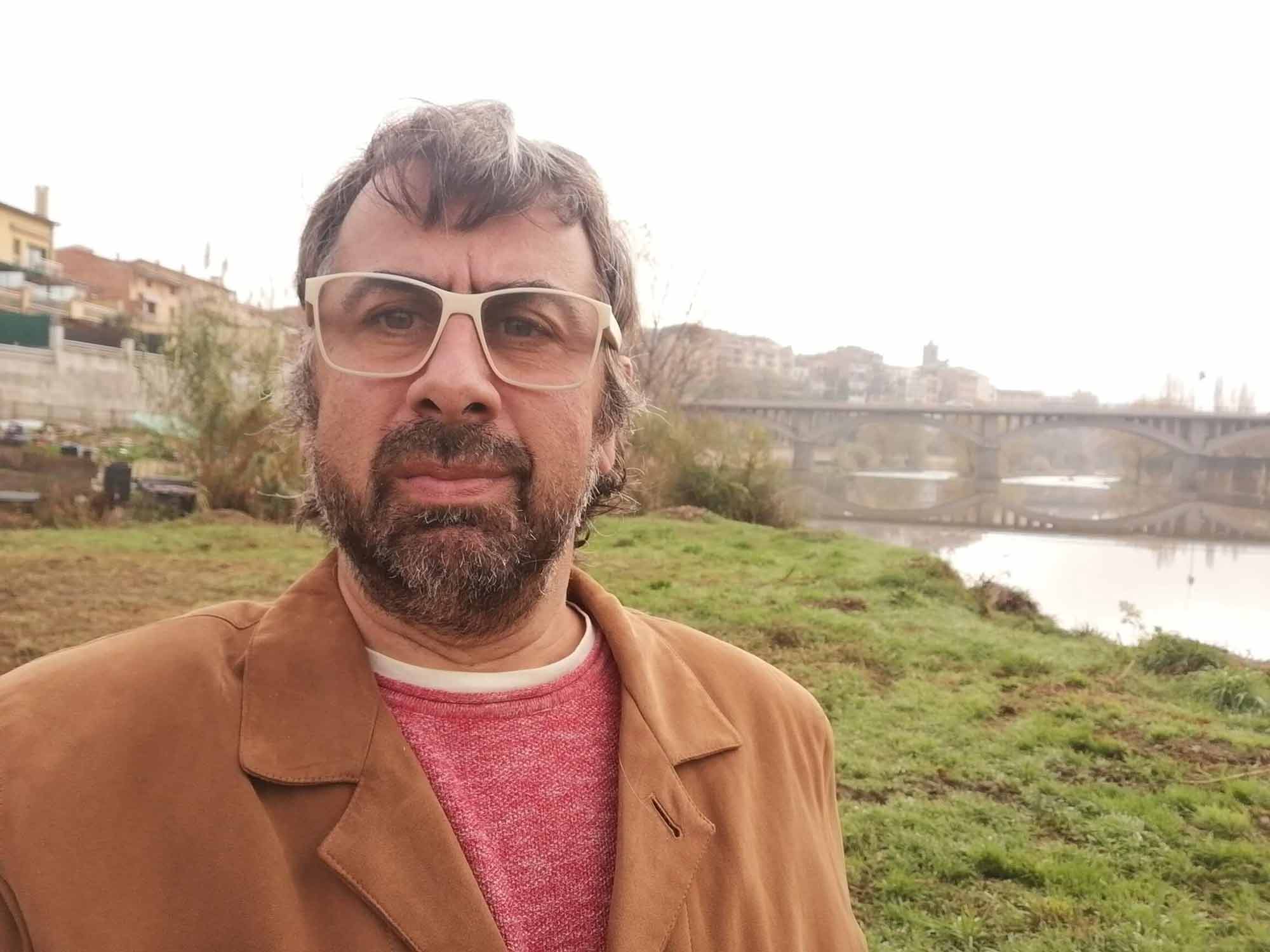Personalised ICT-tools for the Active Engagement of Consumers Towards Sustainable Energy
Written by Ramon Gallart Fernandez and Chloé Coral
Eco-bot project aims to utilize recent advances in chatbot tools and advanced signal processing (i.e. energy disaggregation) using low-resolution smart meter-type data with the goal of changing their behaviour towards energy efficiency. Eco-Bot targets to a personalized virtual energy assistant to deliver information on itemized (appliance-level) energy usage through a chat-bot tool. The "chat-bot" functionality will use an attractive frontend interface, permitting seamless communication in a more natural and interactive way than a traditional mobile application. This way, eco-bot aims to achieve a higher level of engagement with consumers than previous efforts (i.e. serious games, gamification, competitions or other interactive ICT), by adding a more engaging form of interaction with existing platforms that has been proven in different market settings.
A creation of an energy efficiency model is crucial for minimizing energy consumption through user engagement. This can be allowed by the design of targeted and highly personalized measures aimed to engage users towards a sustainable energy consumption. For this purpose, a new multi-component taxonomy of energy recipients for eco-bot’s behavioural model was created based on the results of the empirical research.
Eco-Bot System
The purpose of this article is to explain how the eco-bot system has been rolled out and tested through pilot participants in different use cases, business models and types of clients. The three demo cases considered for the deployment of the tool were:
- Business to business to consumers, where an energy consulting technology firm facilitated the tool to a no-profit organization that then promoted it to its residential end-customer.
- Business to consumer, where a utility facilitated the tool to its residential customers (this is the case of Estabanell Energia, Spanish retailer)
- Business to business, where an energy management software provider facilitated it to their end-customer facility managers.
The eco-bot1 project has involved various types of energy consumers, with the common goal of changing their behaviour regarding energy efficiency. This includes personalized energy recommendations as well as an easy access to energy cost, and environmental impact data for any period the user is asking for, even at appliance level. The eco-bot system consists in different technological components, such as central backend, bot frontend, behaviour model, Non-Intrusive Load Monitoring (NILM) module and the backends of the pilot partners which are energy monitoring systems which must interact soundly. Therefore, the aim is to provide a common approach and a strategic roadmap for all three use cases mentioned previously.
The test objective is to prove that the bot is easy to use and well-integrated into the user frontend of the pilots, the recommendations made are reasonably tailored to the user and that the customers are slowly changing behaviour adopting energy efficiency measures. Furthermore, the transfer and accuracy of data between the pilots’ backends, the single modules and the central backend must be proved.
Eco-Bot Perspective
The involvement of users with web or mobile applications should be treated in the same way as the consumer's involvement with the brand is treated in marketing theory. Shaping the consumer's attention, strengthening dialogue, building interaction, triggering emotions, and providing sensory pleasure, all these features aimed at shaping positive experiences.
It is necessary to properly lead the user through the energy efficiency journey and reach the goal set by the project. However, in society a wide spectrum of human behaviours, views, and beliefs can be observed. Therefore, it is fundamental to prepare an engagement strategy for all types of consumers, in accordance with their characteristic and proactivity.
To reach this goal all recommendations were prepared by considering a behavioural segmentation. The assumptions regarding energy behaviours of end users allowed to pinpoint five major segments which explain the underlying motivation of the end-users to act. This segmentation - with the additional data characterising individual segments - was then chosen as the basic determinant in the formulation of the recommendations aiming to bring better results in changing the energy behaviours.
Behavoiral Segmentation
The five types of customers identified for the behavioural segmentation are:
- Ecological idealist: a firm believer in pro-ecological behaviours.
- Aspiring ecologist: trying/aspiring to be more ecological.
- Dedicated Saver: ecologist if it pays off.
- Opportunist: ecological only if it is easy to apply.
- Indifferent.
An ecological idealist is the ideal type, aware of the problems and limitations associated with excessive energy use, caring for the environment and motivated to modify his/her behaviour towards energy efficiency. He/she consciously tries to be neutral or to have a positive impact on the natural environment and society through his consumption. A consumer who will qualify for this segment will become the project's ambassador and achieve set goals. Here the engagement strategy is the easiest one, due to its full identification with the project assumptions.
The aspiring ecologist is, to some extent, aware of problems and limitations related to excessive energy use and can be motivated to modify his/her behaviour towards more energy-efficient ones. The main differences compared to the previous segment is the fact that his/her behaviour is motivated not only by the desire to protect the environment but also by trying to display his/her image as a socially and environmentally responsible person, stemming from the desire to belong to a given group. In this engagement strategy knowledge of activities aimed at reducing energy consumption have been considered.
The dedicated saver on the one hand is aware of the existence of environmental resource limitations, has a basic knowledge of the risks associated with excessive energy consumption, but on the other hand the main reason for saving energy is not caring for the protection of natural resources and the environment, but the desire to minimize fees and reduce expenses.
In this case the engagement strategy couples the pro-ecological actions to take with financial benefits.
The opportunist has the least knowledge about ecological problems. He/she believes that climate change is exaggerated and very distant in time, and sometimes believes that he/she has no impact on the environment, regarding ecology as a troublesome, alternative lifestyle. The consumer here can be motivated only if the changes will be easy to apply or introduce and more that they can be financially beneficial for him/her.
Finally, the indifferent shows a complete lack of interest and care for the environment, does not show any pro-ecological or saving environment resources actions and does not want to be informed about how he/she can change his/her habits or lifestyle. It is very likely that such person will not be interested in the eco-bot application, its operation and obtaining recommendations of any kind.
Each participant was assigned to one of these segments after completing a tailored survey concerning energy-related behaviours and household characteristics of the given respondent.
Recommendation Strategy
According with these customer segments the recommendations for the engagement strategy were defined and mapped to the factors of Triandis’ model. The mapping focuses on attitudes (composed of beliefs about outcomes of certain behaviour and the evaluation thereof), social factors (composed of norms, roles and self-concept), affects (emotions) and past behaviours.
Furthermore, the fact that the customers were owner or tenant of the house and their range of income affected the type of recommendations established for them.
Developed recommendations are the basic tool for creating appropriate attitudes and behaviours of application users and are used for ecological education of consumers. They relate to activities aimed at increasing the efficiency of energy use to achieve the project's goal of reducing energy consumption and protecting the environment.
Eco-bot Project, has received funding from the European Union’s Horizon 2020 research and innovation programme under grant agreement No 767625. The information contained in this website reflects only the authors’ view. EC is not responsible for any use that may be made of this information.
Annotations
1http://eco-bot.eu/
This article edited by Geev Mokryani
For a downloadable copy of the May 2021 eNewsletter which includes this article, please visit the IEEE Smart Grid Resource Center.


To have the Bulletin delivered monthly to your inbox, join the IEEE Smart Grid Community.
Past Issues
To view archived articles, and issues, which deliver rich insight into the forces shaping the future of the smart grid. Older Bulletins (formerly eNewsletter) can be found here. To download full issues, visit the publications section of the IEEE Smart Grid Resource Center.




